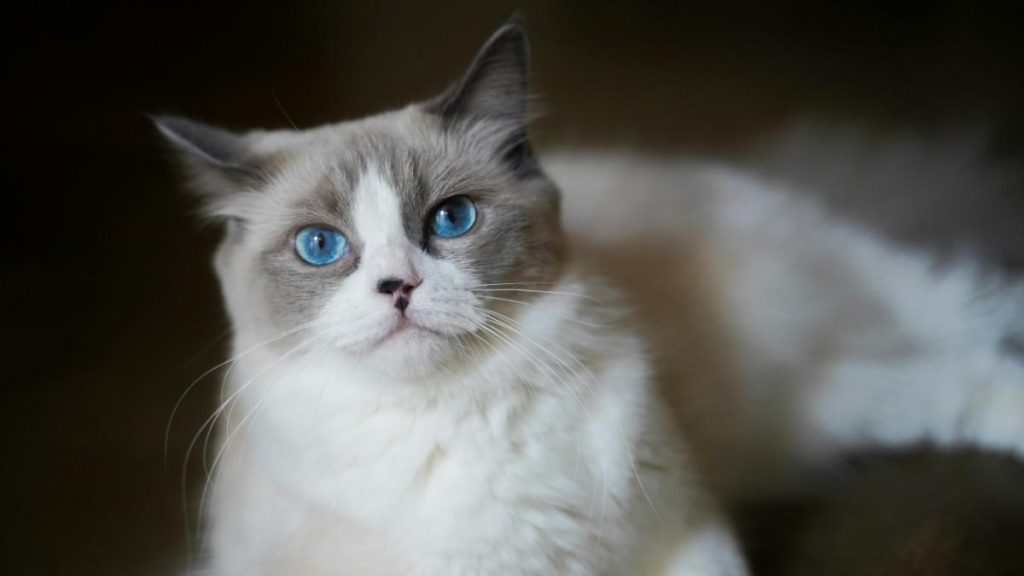Living with a house cat brings a comforting rhythm to daily life. These graceful, independent, yet affectionate creatures have earned their place as cherished companions in homes across the globe. Whether sprawling lazily on a windowsill, greeting you with a soft purr, or playfully darting after a feather toy, Best house cat Breeds fill our homes with warmth and charm. For many people, the idea of sharing life with a cat brings with it the promise of peaceful companionship, low-maintenance care, and the quiet joy of observing feline quirks and behaviors. Not every cat breed, however, is equally suited to the indoor lifestyle. Some require more space, more stimulation, or are simply happier outdoors. That’s why choosing the right breed for an indoor environment is essential.
Over time, certain breeds have emerged as ideal house cats due to their temperament, grooming needs, energy levels, and overall adaptability to indoor living. Some are lap-loving cuddlers, while others are quiet observers, content to enjoy your presence from a distance. Others still are social butterflies, loving every second of human interaction. This guide explores the top house cat breeds that thrive in domestic settings, highlighting their personalities, grooming demands, and what makes each one a standout choice. For those considering welcoming a feline into their home, understanding the differences between breeds can make all the difference in building a lasting, fulfilling bond. From plush-coated charmers to hairless snugglers, this comprehensive look at the best house cat breeds offers insight for every type of cat lover seeking the perfect indoor companion.
Why Choose a House Cat?
Benefits of Indoor Cats
Indoor cats typically live longer, healthier lives than their outdoor counterparts. They are less exposed to hazards like vehicles, predators, contagious diseases, and environmental toxins. Keeping cats indoors also protects wildlife, as domestic cats are natural hunters. This safe, controlled environment minimizes risk while allowing owners to provide a structured and stimulating life.
Things to Consider Before Getting a House Cat
Before bringing a cat into your home, it’s crucial to assess your living space, daily routine, and personal preferences. Some cats demand constant attention and mental stimulation, while others are more content with occasional interaction. Grooming commitment varies greatly by breed. Allergies, shedding, and vocal tendencies should also factor into your decision.
Top 10 Best House Cat Breeds
1. Ragdoll
Personality Traits
Ragdolls are known for their relaxed, affectionate nature. They enjoy being held, often going limp in your arms, and are exceptionally friendly with children and other pets. Their social and docile personality makes them an ideal house companion.
Grooming Needs
Despite their plush appearance, Ragdolls have semi-long fur that resists matting. Brushing them twice a week keeps their coat smooth and clean.
2. British Shorthair
Personality Traits
The British Shorthair exudes calmness and independence. They are not overly clingy but enjoy being near their humans. Their laid-back nature makes them perfect for apartment living or quieter households.
Grooming Needs
These cats have dense, plush coats that require weekly brushing to prevent shedding buildup. Their grooming routine is generally easy and stress-free.
3. Maine Coon
Personality Traits
Affectionate and playful, Maine Coons are gentle giants. They have dog-like personalities and are known for their chirpy vocalizations. Their intelligence and friendly demeanor make them great for homes with other pets.
Grooming Needs
Maine Coons have thick, water-repellent fur that should be brushed several times a week. Regular grooming prevents matting and helps manage shedding.
4. Persian
Personality Traits
Persians are luxurious in appearance and demeanor. Calm and affectionate, they prefer quiet environments where they can lounge undisturbed. Their sweet nature makes them ideal lap cats.
Grooming Needs
Daily grooming is essential for Persians. Their long, fine hair tangles easily and must be maintained with regular brushing and eye cleaning.
5. Scottish Fold
Personality Traits
Known for their distinctive folded ears, Scottish Folds are gentle and adaptable. They enjoy being around people and are known for their quiet voices and soft demeanor.
Grooming Needs
Scottish Folds with short coats require minimal grooming, while long-haired varieties need weekly brushing. Their ears should be checked regularly for cleanliness.
6. Siamese
Personality Traits
Siamese cats are vocal, social, and deeply attached to their owners. They crave interaction and thrive in homes where someone is often around to engage them.
Grooming Needs
Their sleek, short coats are easy to maintain with occasional brushing. Routine grooming is more about bonding than necessity.
7. American Shorthair
Personality Traits
American Shorthairs are friendly, adaptable, and independent. They get along well with children and other pets, making them great family companions.
Grooming Needs
With a low-maintenance coat, these cats require only weekly brushing. Their grooming needs are minimal, ideal for busy households.
8. Sphynx
Personality Traits
Though hairless, Sphynx cats are full of warmth and energy. They love attention, snuggles, and are often described as part cat, part dog, part monkey due to their playful antics.
Grooming Needs
Without fur to absorb natural oils, Sphynx cats need regular baths. Their ears and skin require consistent cleaning to avoid buildup.
9. Burmese
Personality Traits
Burmese cats are affectionate, playful, and people-oriented. They form strong bonds with their owners and are happiest in environments with lots of social interaction.
Grooming Needs
Their short, glossy coats need little upkeep. A weekly brushing keeps their coat healthy and distributes natural oils.
10. Exotic Shorthair
Personality Traits
Exotic Shorthairs combine the Persian’s sweet nature with the American Shorthair’s ease. They are affectionate but not demanding, and they enjoy both playtime and quiet moments.
Grooming Needs
Their short, dense coat is easier to care for than a Persian’s but still benefits from regular brushing to manage shedding.
How to Choose the Right Cat for Your Home
Match the Breed to Your Lifestyle
Each breed has unique personality traits. While some cats are content to be independent and aloof, others need constant companionship. For people with full-time jobs or limited space, low-maintenance and less needy breeds may be best.
Consider Allergies and Shedding
Some breeds, like the Sphynx or Siamese, shed less and may be suitable for allergy sufferers. Understanding a breed’s grooming and shedding profile can help avoid unwanted issues later on.
Tips for Raising a Happy House Cat
Provide Mental Stimulation
Interactive toys, puzzle feeders, and window perches help keep house cats engaged. Cats thrive when they can mimic hunting behaviors in a safe, indoor setting.
Create a Safe, Cozy Environment
Cats enjoy cozy, warm spaces. Offer plenty of hideaways, climbing trees, and soft bedding to encourage relaxation and reduce stress.
Regular Vet Visits Are a Must
Annual veterinary care ensures your indoor cat stays healthy. Regular check-ups, vaccinations, and dental cleanings contribute to a longer, happier life.
Final Thoughts
Choosing the right house cat breed involves more than just falling for a cute face. It’s about finding a companion that suits your lifestyle, space, and personality. From the luxurious Persian to the social Siamese, each breed offers its own blend of traits that make them uniquely suited for life indoors. While grooming needs, energy levels, and sociability vary, all the breeds listed above have one thing in common: they thrive in a home where they are loved, cared for, and understood. Whether you’re a first-time cat owner or a seasoned feline fan, selecting the right indoor breed can lead to a deeply rewarding bond that enriches daily life. As with any pet, the key to a happy relationship is respect, attention, and a bit of patience. With the right match, your house cat will become a beloved member of the family.
Frequently Asked Questions (FAQs)
1. Which house cat breed is the most low-maintenance?
The American Shorthair is among the easiest to care for, requiring minimal grooming and having an adaptable temperament.
2. What breed is best for small apartments?
The British Shorthair and Scottish Fold are both calm and quiet, making them excellent choices for apartment living.
3. Are there hypoallergenic house cat breeds?
While no breed is completely hypoallergenic, the Sphynx and Balinese tend to produce fewer allergens and may be better for allergy sufferers.
4. Which breed is best with children?
Ragdolls and Maine Coons are gentle, patient, and sociable, making them great companions for families with kids.
5. Do house cats need outdoor time to be happy?
House cats can be perfectly content indoors if provided with enough mental stimulation, exercise, and affection. Catios or window perches can enrich their indoor life.


